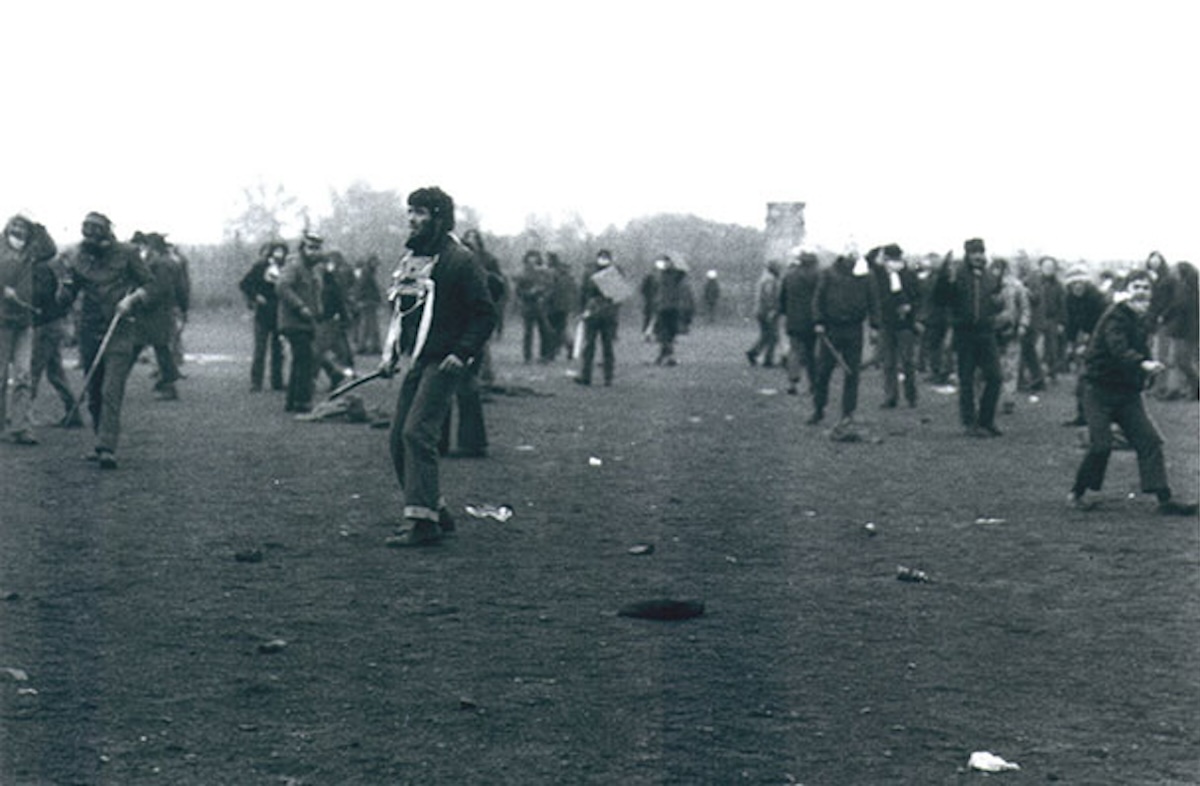
Tuesday, October 15 marked the 50th anniversary of what is believed to be the single largest battle between republicans and the British Army of the conflict. We reprint an account of the events of that day.
Shortly after 6pm on October 15 1974 around 800 republican internees and sentenced prisoners began to burn their prison compounds inside Long Kesh.
Within hours, 21 of the compounds used to house the internees and sentenced prisoners had been destroyed.
As the flames licked high into the night sky republicans took over the entire prison complex, destroying watch towers and prison administration buildings.
The blaze was visible four miles away from the prison.
Republicans had already informed their loyalist counterparts that the prison was to be raised to the ground and loyalists had agreed that their compounds were to be used as first-aid centres, for the battle which would inevitably erupt with the army.
“We had been preparing to burn the camp for months,” explains former PoW Kevin Carson.
“There had been a battle with the NIO over visits, food and compassionate parole for most of 1974. Eventually it was decided that enough was enough and Long Kesh had to be burned.”
The extent of republican planning was such that they had already made their own respirators to combat the CS gas which they were sure the British army would use against them once the fighting began.
“We trained for months so that we were physically fit when the time came to burn the camp. People were told to send anything of value out to their families and others had to carry first-aid kits around with them.
“The hardest thing was making the gas masks because we had to sew charcoal filters into the masks to stop the gas.”
Ironically Kevin Carson says the burning of the cages, as they were known, was the easy part.
“We were in Cage 17 when the word came to burn it and pretty soon we had broken out of the compound and were destroying internal watch towers and prison generators.”
Republicans debated over what should happen to the guard dogs used to patrol the perimeter of the compounds.
“It was decided to put the dogs into a run, although some did die by accident in the fires.”
Within hours hundreds of republicans armed with batons and shields taken from prison officers’ quarters gathered on the jail’s football pitches as thousands of soldiers sealed-off Long Kesh’s perimeter.
Meanwhile similar fires were started at Magilligan jail in County Derry. In Armagh women’s prison republicans took a governor and three warders hostage. They were later released unharmed.
While fighting continued throughout the night, it wasn’t until the following morning that the British Army made a concerted effort to retake Long Kesh.
“They sent in armoured cars at first and fired hundreds of rubber bullets at us.
“But around 11am a Gazelle helicopter appeared over the football pitches and started to fire gas canisters down on us.”
Although the republicans had been prepared for the effects of CS gas they had not prepared for the use of what they believe to be CR gas or Dibenzoxa-zepine, which is thought to be 10 times stronger than its CS counterpart.
“We could cope with CS gas because people were used to it and we had the respirators. But this CR gas was different.
“The canisters from the helicopter exploded 100 feet from the ground into dozens of cluster bombs which fell all over the pitches.
“The first physical feeling I had was of drowning. My body felt as if it was filling up with fluid. Other men felt as if they were on fire. Men were lying on the ground choking and screaming.”
The pitch battle between republicans and the army continued with some soldiers being taken prisoner.
“The soldiers were handed back to the Brits but when our OCs (commanding officers) eventually gave the order for us to return to the cages we were badly beaten by the Brits.”
The republicans returned to smouldering compounds.
“In Cage 17 we were lucky that some of the huts hadn’t burned completely so we had some cover. In other cages guys were forced to sleep under nothing but tarpaulin in the wind and the rain. We weren’t moved to new cages for more than a month.”
The cost of the burning of Long Kesh was estimated at 1.5 million pounds. Then British Direct Ruler Merlyn Rees reported 130 prisoners and nine warders had been injured in the disturbances.
Republicans disputed the figures, pointing out the north’s three main hospitals had reported treating more than 180 prisoners.
But Kevin Carson said it is the effects of the CR gas which continues to cause controversy.
“(They) denied using CR gas, but a few weeks later their doctors tested everyone’s blood. We hadn’t asked for tests and were never given the results.
“Since then an awful lot of the men who inhaled the gas on the pitches have developed cancer.
“Many have died and we are calling on the British government to come clean on what gas was used on us.
“(They) were eventually forced to admit that CR gas was sent to Long Kesh but still deny actually using it.”
![[Irish Republican News]](https://republican-news.org/graphics/title_gifs/rn.gif)
![[Irish Republican News]](https://republican-news.org/graphics/title_gifs/harp.gif)

